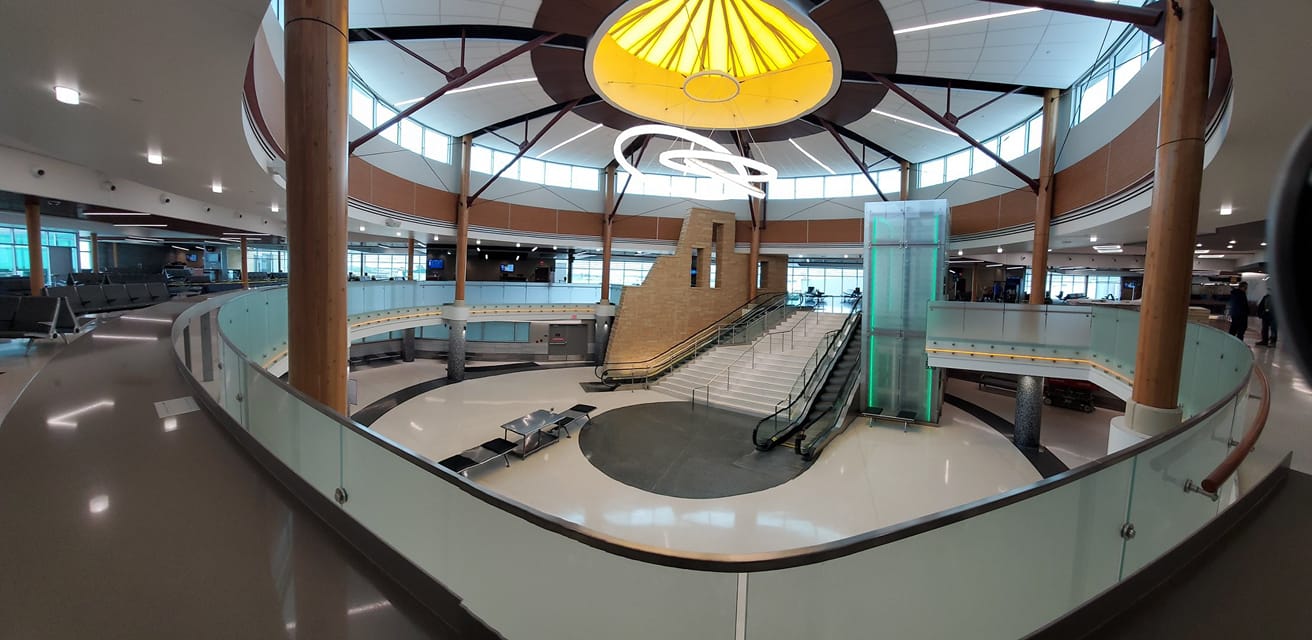
The Eastern Iowa Airport’s third annual “State of Your Airport” event on June 18 highlighted that the airport is doing very well, but cautioned that residents need to continue to use the facility or this momentum could be reversed.
“Without your strong support, we simply do not exist as a commercial service airport,” Marty Lenss, airport director said — a sentiment echoed by Cedar Rapids Mayor Tiffany O’Donnell.
“In order to grow our airport, we must use our airport,” Ms. O’Donnell said. “We need to always look to CID for work as well as leisure travel.”
According to a CBJ news report, the airport’s passenger count reached a record high of 1.4 million in 2023. Trends for 2024 are already favorable, Mr. Lenss said, with year-to-date passenger traffic up 10% and receipts from airlines up 14% in the third quarter of 2024, compared to the same period a year ago.
Investment in the airport continues to impress. The airport has a new Fixed Base Operator (FBO) building, a $13 million facility completed in April at 3525 Beech Way SW, just west of the main terminal, to house its current FBO Signature Aviation, which provides charter and private jet services.
According to the CBJ report, the new facility, combined with the fourth and final phase of the airport’s terminal renovation project, represent a $75 million infrastructure investment at the airport, Mr. Lenss said. He noted that all the work on both projects has been completed by local contractors.
We appreciate the airport’s investment. Residents and businesses should continue to celebrate and use the airport.
Ag economy slowing
The agriculture economy continues to slow, which partially explains some of the recent layoffs at John Deere.
According to a press release from Economist Ernie Goss, Ph.D., Jack A. MacAllister Chair in Regional Economics at Creighton University’s Heider College of Business, the overall Rural Mainstreet Index (RMI) sank below growth neutral for a 10th straight month, according to the June survey of bank CEOs in rural areas of a 10-state region dependent on agriculture and/or energy.
The region’s overall reading for June sank to 41.7 from 44.2 in May. The index ranges between 0 and 100, with a reading of 50 representing growth neutral.
“Higher interest rates, weak agriculture commodity prices and sinking agriculture equipment sales pushed the overall reading below growth neutral for the 10th straight month,” Mr. Goss said.
Notably, the farm equipment sales index for June dropped to 31.8 from 34 in May. “This is the 12th time in the past 13 months that the index has fallen below growth neutral. Higher borrowing costs, tighter credit conditions and weak grain prices are having a negative impact on the purchases of farm equipment,” said Mr. Goss.
While the stock market might be reaching record levels, parts of the economy aren’t doing as well.